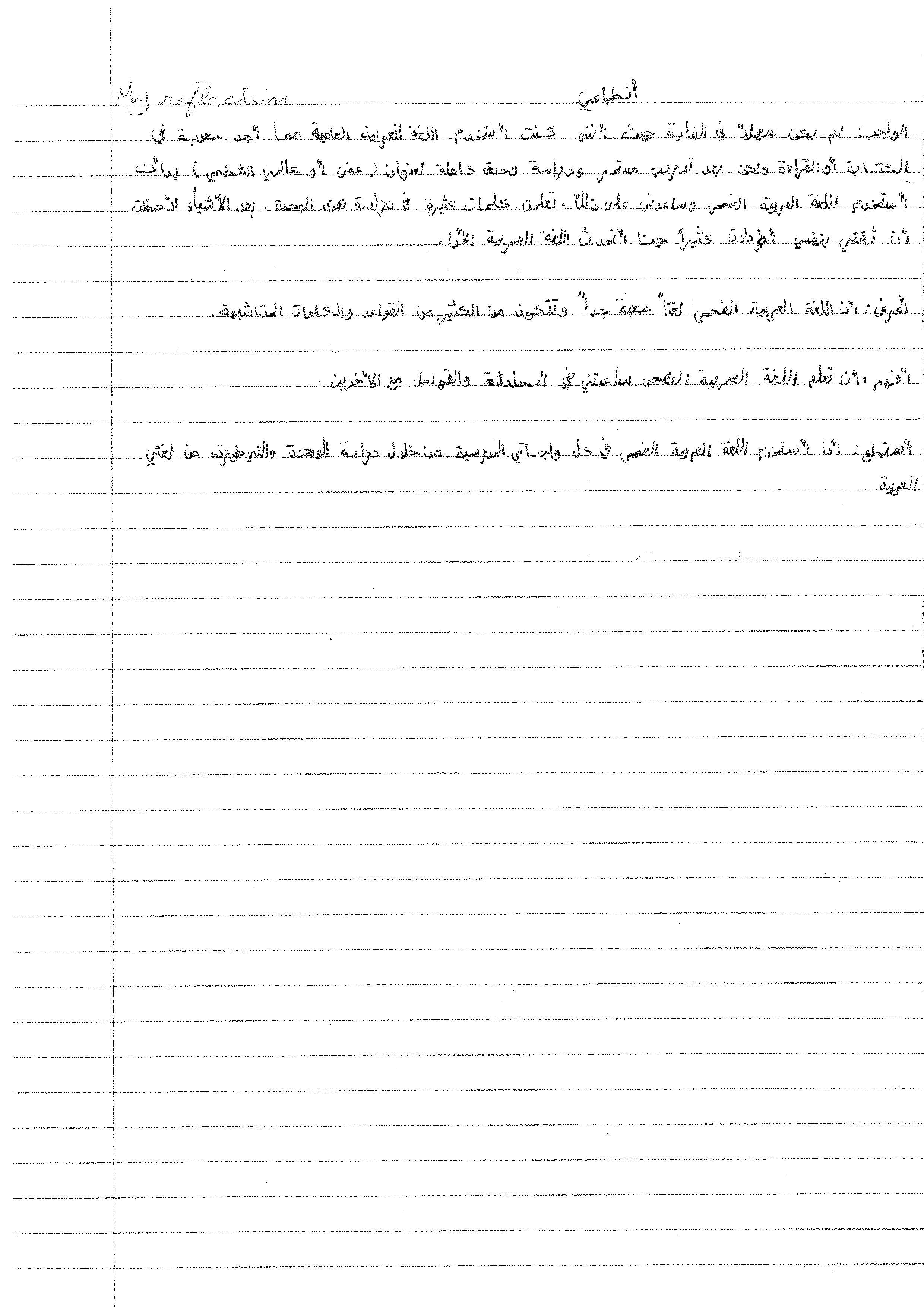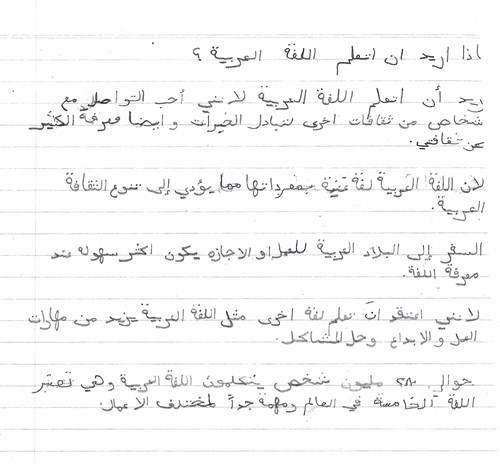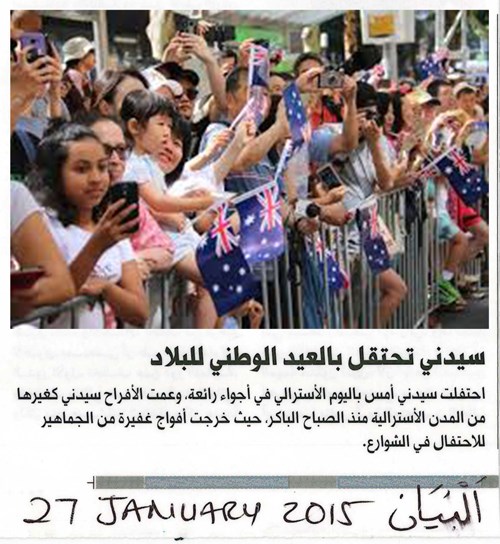By the end of Year 8, students use written and spoken Arabic to exchange information about their personal worlds and to express feelings, likes and dislikes. They use formulaic language for a range of classroom functions and processes, such as asking and responding to questions, following instructions, requesting repetition and asking for permission and assistance, for example, متى أكملت البحث؟؛ من ساعدك في إكمال الواجب المدرسي؟؛ هل يمكن أن تعيد السؤال؟؛ لو سمحت؛ ممكن أن أستخدم الهاتف؟؛ من فضلك ممكن أن تساعدني في حمل صندوق الكتب؟. Students use rehearsed and some spontaneous language to engage in planning, transacting, making arrangements and negotiating. They apply features of pronunciation and rhythm in spoken Arabic to a range of sentence types. They locate, classify and sequence key points of information from a range of sources and communicate information and ideas related to home, school, leisure and interests using different modes of presentation. They share their responses to different imaginative texts by expressing feelings and ideas about the ways in which characters, settings and events are represented. Students use modelled language to create imaginative texts or alternative versions of texts they have listened to, read or viewed. They use key grammatical forms and structures in spoken and written texts, such as articles, nouns, adjectives, personal pronouns, verbs and verb tenses, conjunctions, adverbs (for example, ال التعريف البيت؛ المدرسة؛ الدراسة؛ العائلة؛ المواد الدراسية؛الهوايات كبير/كبيرة؛ طويل/طويلة؛ ممتع/ممتعة؛ مفيد/مفيدة؛ مدرستي كبيرة؛ عائلتي صغيرة؛ بيتي واسع؛ شارعنا ضيق؛, أنتَ؛ أنتِ؛ أنتم؛ هو؛ هي؛ هم؛ أذهب إلى المدرسة؛ نذهب إلى السينما؛ ذهبت إلى السينما؛ ذهبنا إلى زيارة الأقارب و؛ أو؛ كذلك؛ أيضاً؛ لأنّ يوميا؛ غالبا؛ أحيانا؛ بكيت بشدّة؛ تكلمت بحماسٍ؛ إستيقضت متأخراً؛ وصلت إلى المسرح باكراً . They apply writing conventions to written texts, such as لا أستطيع أن أكمل البحث؛ لم أستطع أن أجيب على جميع أسئلة الإمتحان أين تتمرن لكرة القدم؟ متى تلعب الرياضة؟ ما هي مادتك المفضلة؟ كم شخص يوجد في عائلتك؟ إستخدام العنوان؛ الفقرات؛ الفواصل؛ أدوات الترقيم؛ التوقيع في خاتمة الرسالة. They use contextual cues and textual features to translate and interpret everyday texts from Arabic into English and vice versa, and identify similarities and differences in translation. They create texts in Arabic and English, identifying words and expressions that do not readily translate, such as بالهناء والشفاء؛ والله ولي التوفيق. They compare ways of communicating in Arabic and English and explain how their own biography influences their cultural identity and ways of communicating.
Students identify and apply the writing conventions of the Arabic alphabet and script, making connections between spoken and written Arabic in texts. They identify the structure and features of different personal, informative, and imaginative texts and provide simple explanations as to how these elements contribute to meaning. They identify ways in which spoken Arabic varies according to regions and countries, and provide examples of how Arabic has changed over time due to influences from other languages and cultures. Students identify how written Arabic varies in style and in the use of formal and informal forms, for example, أنتَ/حضرتكَ/حضرتكم, according to context, situation and the relationship between participants. They identify ways in which language use reflects cultural ideas, thoughts, and perceptions.





